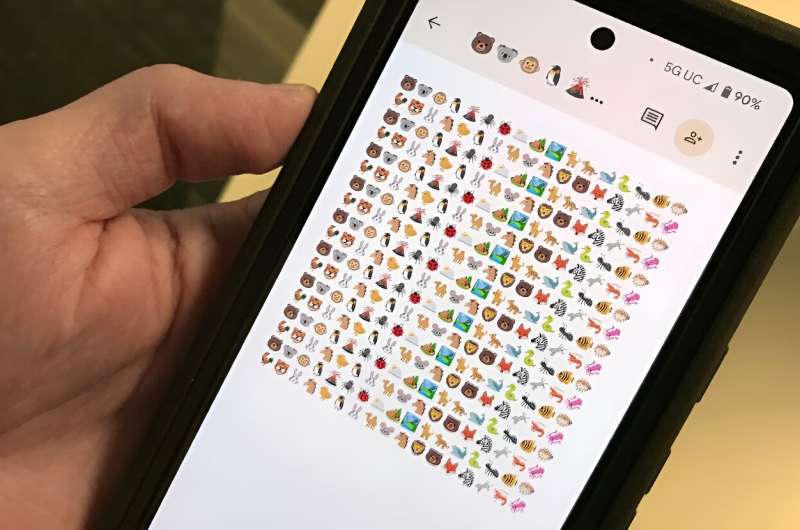Fungi and flatworms: Scientists want more diverse nature emojis

Too many cats, not enough crustaceans: The current emoji catalog doesn’t accurately represent the breadth of biodiversity seen in nature—and that hurts conservation efforts, according to scientists.
An analysis published Monday in the journal iScience found that while animals are well represented by the current emoji catalog, plants, fungi, and microorganisms get short shrift.
“While the biodiversity crisis may seem distant from the online world, in our increasingly digitized society, we should not underestimate the potential of emojis to raise awareness and foster appreciation for the diversity of life on Earth,” wrote authors Stefano Mammola, Mattia Falaschi, and Gentile Francesco Ficetola.
“The development and maintenance of diverse and inclusive emoji sets are crucial to ensure the equitable representation of the tree of life in digital communication tools,” added the University of Milan conservation biologists.
The team assessed emojis related to nature and animals available in Emojipedia, a curated online catalog of emojis, and tracked how these changed between 2015 and 2022.
Among animals, vertebrates—including mammals, birds, reptiles, amphibians, and bony fish—were overrepresented, making up 76 percent of animal emojis.
Arthropods, including insects, arachnids, crustaceans, were proportionally underrepresented, despite there being 1.3 million described species of arthropod compared to 85,000 known species of vertebrate.
The researchers also noted there were no emojis representing either platyhelminths—flatworms, including tapeworms—or nematodes, despite there being more than 20,000 platyhelminth species and almost 20,000 nematode species.
On the flip side, they found emoji biodiversity was increasing. “Annelids gained representation in 2020 with the addition of the ‘worm’ emoji, which most likely represents an earthworm, and cnidarians gained representation in 2021 with the addition of a red coral emoji,” they found.
More information:
Biodiversity communication in the digital era through the Emoji Tree of Life, iScience (2023). DOI: 10.1016/j.isci.2023.108569. www.cell.com/iscience/fulltext … 2589-0042(23)02646-9
© 2023 AFP
Citation:
Fungi and flatworms: Scientists want more diverse nature emojis (2023, December 12)
retrieved 12 December 2023
from https://techxplore.com/news/2023-12-fungi-flatworms-scientists-diverse-nature.html
This document is subject to copyright. Apart from any fair dealing for the purpose of private study or research, no
part may be reproduced without the written permission. The content is provided for information purposes only.
For all the latest Technology News Click Here
For the latest news and updates, follow us on Google News.

